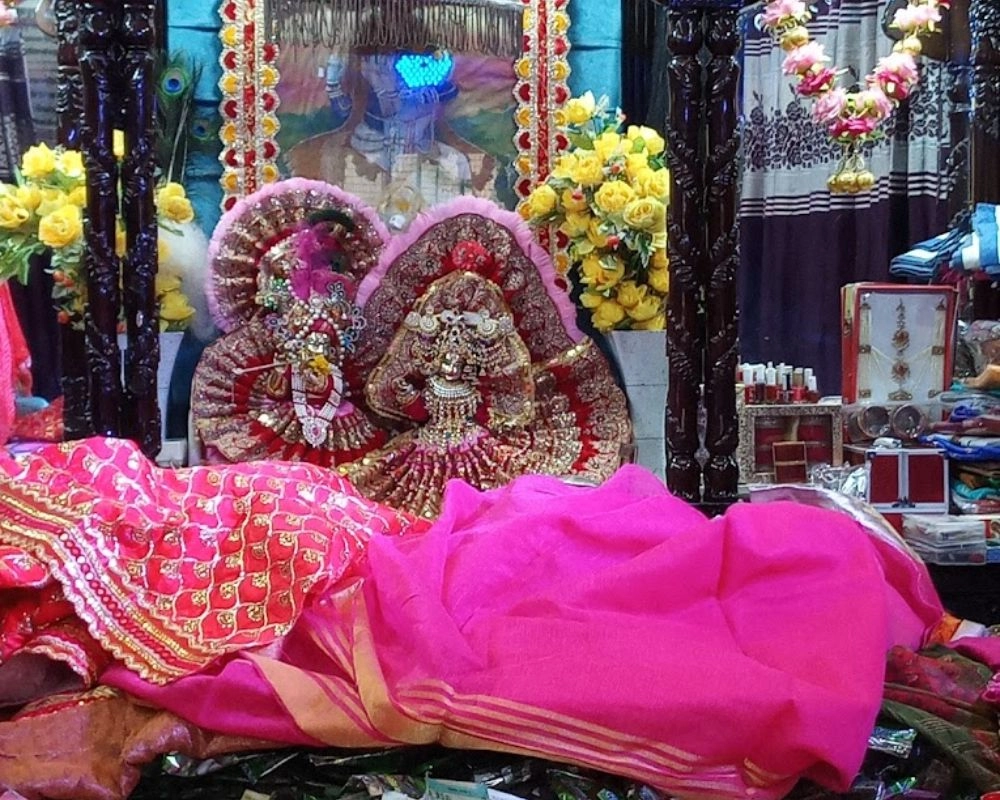Prem Mandir
Nestled in the sacred town of Vrindavan, Uttar Pradesh, Prem Mandir (Temple of Love) stands as a maj...

Vrindavan is a land soaked in devotion, divine love, and ancient legends associated with Lord Krishna. Among the many sacred sites here, Nidhivan Mandir holds a unique and mysterious place in the hearts of devotees and spiritual seekers. It is not just a temple — it is a living legend, where faith meets mystery, and where divine energy is said to be felt even today.
Nidhivan, literally meaning "the forest of treasure," is a sacred grove in Vrindavan, Mathura district of Uttar Pradesh. At the heart of this mystical forest lies Nidhivan Mandir, a temple dedicated to Radha-Krishna, surrounded by tulsi plants that resemble miniature human figures, and a spiritual ambiance that feels untouched by time.
It is believed that Lord Krishna himself visits Nidhivan every night to perform his divine dance, the Rasa Leela, with Radha and the gopis (cowherd girls). Due to this sacred belief, the area is considered so holy and mysterious that no one is allowed to stay inside Nidhivan after dusk.
According to ancient lore, Lord Krishna appears every night in Nidhivan in his spiritual form along with Radha Rani and the Ashta-sakhis (eight principal gopis) to re-enact the celestial Rasa Leela. It is said that:
The tulsi plants in Nidhivan are not ordinary shrubs — they are believed to transform into gopis at night.
The Rang Mahal, a small room inside Nidhivan, is where Radha and Krishna are believed to rest after the dance.
Every evening, the priests prepare the bed, leave toiletries, paan, water, and clothes in the Rang Mahal before closing the doors. In the morning, these items appear to be used — the bed is rumpled, the water is drunk, and the sweets are half-eaten.
This mysterious activity has never been caught on camera, as anyone who tries to stay in Nidhivan after evening faces mental trauma, blindness, or even death, according to local beliefs.
After the evening aarti, the entire premises are vacated. Locals and priests say that:
Birds and monkeys, normally present during the day, leave Nidhivan after sunset.
No one — not even guards or sadhus — dares to stay inside.
Attempts to uncover the truth behind the divine activities have always failed, either due to spiritual consequences or malfunctioning of cameras and equipment.
This sacred secrecy has only deepened the mystery surrounding Nidhivan, making it one of the most talked-about spiritual destinations in India.
Nidhivan is not a grand temple made of marble or gold — instead, it is a simple yet deeply sacred forested area, filled with:
Intertwined Tulsi plants: These grow in pairs, twisted together like lovers, with no logical botanical explanation.
Soft, sandy ground: Believed to be the divine soil where Krishna danced.
The Rang Mahal: A small sanctum with the bed of Krishna and Radha, closed after sunset.
Natural silence: Despite being in a bustling town, Nidhivan has an unusual silence that gives a sense of timelessness.
Nidhivan Mandir is located in Vrindavan, about 10 km from Mathura, in the state of Uttar Pradesh, India.
Morning: 5:00 AM to 12:00 PM
Evening: 4:00 PM to 7:00 PM (closed strictly after this)
Visitors must vacate the premises before sunset
During Janmashtami and Radhashtami, the temple is beautifully decorated.
Winters (October to March) are ideal due to the pleasant weather.
Modest attire is encouraged. Shoes are not allowed inside the forest.
Many devotees report feeling:
A strong spiritual presence while walking among the Tulsi plants.
A sense of peace, devotion, and mystery.
A profound connection to Radha and Krishna’s divine love.
Even without any grand visuals or idols, Nidhivan draws people because of its aura and living legends — something that cannot be explained, only felt.
Do not stay after sunset — follow local and temple guidelines.
Do not pluck any Tulsi leaves or damage the plants — they are considered divine.
Photography may be restricted in some areas — always check with temple authorities.
Avoid disbelief or mockery — respect local sentiments and spiritual traditions.
Nestled in the sacred town of Vrindavan, Uttar Pradesh, Prem Mandir (Temple of Love) stands as a maj...
Nestled in the narrow, vibrant lanes of Vrindavan, Uttar Pradesh, the Banke Bihari Temple is one of ...
Rising in the heartland of Lord Krishna’s birthplace, Vrindavan Chandrodaya Temple is not just a tem...
The ISKCON Temple, often recognized by its beautiful domes, serene atmosphere, and the enchanting ch...
